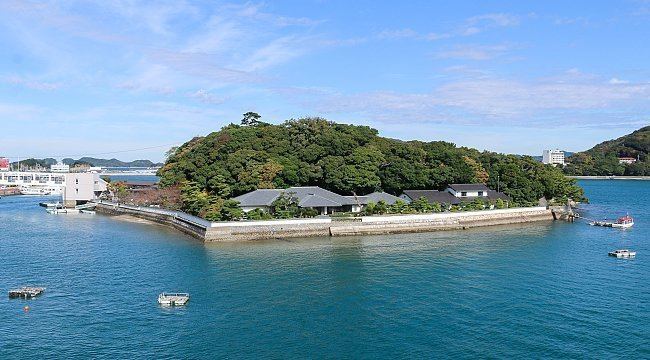 | ||
Similar Toba Aquarium, Toba Station, Tōshijima, Meoto Iwa, Ise‑Shima National Park | ||
Mikimoto pearl island toba city mie prefecture japan
Mikimoto Pearl Island (ミキモト真珠島, Mikimoto-Shinju-Jima) is a small island located in Ise Bay, offshore Toba, Mie Prefecture, Japan.
Contents
- Mikimoto pearl island toba city mie prefecture japan
- Map of Mikimoto Pearl Island 1 Chome 7 Toba Toba shi Mie ken 517 0011 Japan
- Ama pearl divers at mikimoto pearl island
- History
- Pearl Museum
- Mikimoto Kkichi Memorial Hall
- Others
- Access
- References
Map of Mikimoto Pearl Island, 1 Chome-7 Toba, Toba-shi, Mie-ken 517-0011, Japan
This island is known as the birthplace of cultured pearl Aquaculture and it belongs to Mikimoto Pearl Museum Co., Ltd. (株式会社ミキモト真珠島, Kabushiki-Gaisha-Mikimoto-Shinju-Jima). The company runs the island as a tourist attraction, exhibits pearls and pearl craft goods, and holds shows featuring ama divers.
Ama pearl divers at mikimoto pearl island
History
In 1893, Mikimoto Kōkichi, a local entrepreneur, succeeded in producing cultured pearls on an island in Ise Bay called Ojima (相島). In 1919, the island was sold by the town of Toba to Teikoku Kisen Shipping Company, but was purchased back by Toba Town in 1927, and resold to Mikimoto Kōkichi in 1929, with the funds used to establish an elementary school. Mikimoto developed the island as a center for pearl production. In 1951, Mikimoto renamed the island Mikimoto Pearl Island, and set up a company to develop it for tourism. A commemorative museum of the life of Mikimoto was established in 1958, and a Pearl Museum in 1962. A bridge connecting the island to the mainland was completed in 1970. The Pearl Museum was rebuilt in 1985 and the Mikimoto Museum in 1993.
Pearl Museum
Mikimoto Kōkichi Memorial Hall
This museum contains exhibits on the life Mikimoto Kōkichi. Among its exhibits is a reproduction of the Udon shop "Awakō" (阿波幸), where he was born.
Others
The island also contains a bronze sculpture of Mikimoto Kōkichi, the Shrine of Pearl, the Forest of Wild Birds and Observatory, the Restaurant "Awakō" and a pearl shop.
Access
The island is a five-minute walk from Toba Station (Kintetsu Toba Line and JR Sangū Line).
